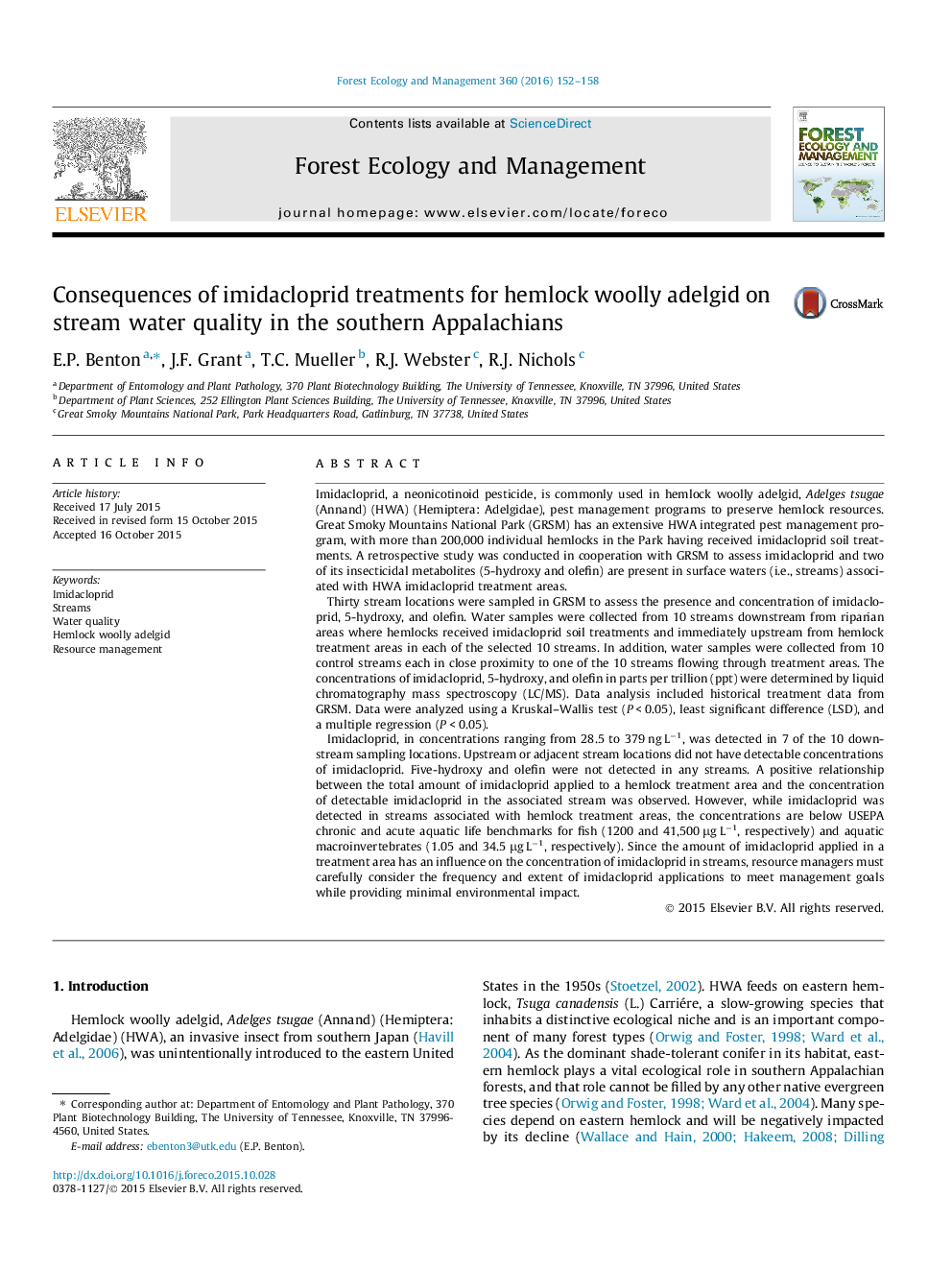| Article ID | Journal | Published Year | Pages | File Type |
|---|---|---|---|---|
| 6542546 | Forest Ecology and Management | 2016 | 7 Pages |
Abstract
Imidacloprid, in concentrations ranging from 28.5 to 379 ng Lâ1, was detected in 7 of the 10 downstream sampling locations. Upstream or adjacent stream locations did not have detectable concentrations of imidacloprid. Five-hydroxy and olefin were not detected in any streams. A positive relationship between the total amount of imidacloprid applied to a hemlock treatment area and the concentration of detectable imidacloprid in the associated stream was observed. However, while imidacloprid was detected in streams associated with hemlock treatment areas, the concentrations are below USEPA chronic and acute aquatic life benchmarks for fish (1200 and 41,500 μg Lâ1, respectively) and aquatic macroinvertebrates (1.05 and 34.5 μg Lâ1, respectively). Since the amount of imidacloprid applied in a treatment area has an influence on the concentration of imidacloprid in streams, resource managers must carefully consider the frequency and extent of imidacloprid applications to meet management goals while providing minimal environmental impact.
Related Topics
Life Sciences
Agricultural and Biological Sciences
Ecology, Evolution, Behavior and Systematics
Authors
E.P. Benton, J.F. Grant, T.C. Mueller, R.J. Webster, R.J. Nichols,
